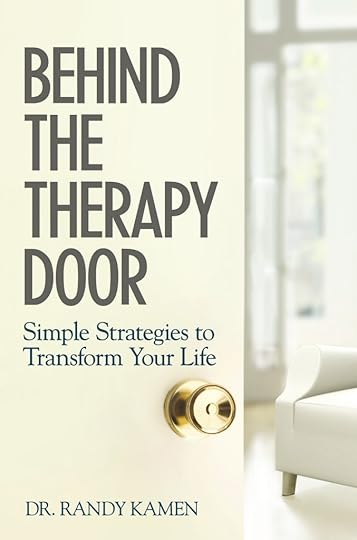Randy Kamen's Blog, page 18
September 25, 2014
Finding Your Balance: Part One
 Beautiful and Balanced Rocks
Beautiful and Balanced RocksWhat fulfills you in your heart of hearts? What is your life purpose? These questions help us focus on the big picture and the vision that we hold for ourselves in life.
Living a life of balance means attending to work, relationships, health, intimacy, spiritual growth, personal growth, flow activities, and making a difference for the greater good. How we leverage these facets determines our experience of life balance.
It is inevitable that balance will not be sustained for an indefinite period of time. Our time, attention, and energy are constantly adapting and competing to meet the demands of everyday life.
From one moment to the next we make choices about how to lead our lives. Knowing that we get to choose liberates us to do just that!
Balance is never a static or perfect state of being. Expect perfection in our lives sets us up for failure, which undermines the ability to move forward. The process of finding balance at times feels great and at other times, not so much. According to psychological thought a healthy mind aims for the best and does not attach its self-worth to the outcome.
We succeed. We fail. We self-correct. The consequences of our actions invariably present opportunities for growth. We are all works in `progress, perpetually adjusting and accommodating to meet the competing demands of our lives as we move in the direction of our dreams and aspirations.
Cultivating rituals that strengthens resiliency, optimism and improves relationships, and our ability to manage the many facets of our lives is vital to our experience of balance and happiness.
Meditation, deep breathing, affirmations, visualization, building the capacity for gratitude, improving communication skills, and making a difference in the lives of others are some of the practices that alter the way the brain fires so that we feel more calm, clear, and connected.
When these practices become internalized, they become the backdrop against which we can create our best possible lives. In time roots take hold and penetrate every aspect of our lives.
In part two of this article I’ll outline some of the most important keys to life balance.
What do you do to create more balance in your day-to-day life?




September 12, 2014
Five Simple Strategies to Transform Your Life
 How do I deal with the emotional pain associated with low self-esteem, disappointing relationships, work-life imbalance, parenting issues, divorce, and aging? There are powerful self-care strategies that, when practiced regularly, will help you overcome painful feelings, build inner strength and resilience, fortify relationships, and transform goals and dreams into realities.
How do I deal with the emotional pain associated with low self-esteem, disappointing relationships, work-life imbalance, parenting issues, divorce, and aging? There are powerful self-care strategies that, when practiced regularly, will help you overcome painful feelings, build inner strength and resilience, fortify relationships, and transform goals and dreams into realities.
With routine practice, these research-based strategies positively alter the workings of the brain and create new thought patterns that boost your experience of happiness. Each strategy weaves together insight therapy and cognitive behavioral training with mind–body practices that are easy to apply. Remember, the potential to heal and achieve greater health and happiness lies within you.
Meet Beth
Beth’s anger ran deep and with little provocation she would lash out at others, even those she loved. She struggled to stay calm and express herself thoughtfully, but ultimately her powerful feelings won out, overtaking her efforts to maintain composure. Her sleep was tormented as she could not stop the flood of thoughts that ran through her mind. Her relationships suffered as did her sense of well-being. To find inner peace Beth needed to learn how to harness her emotions.
Strategies that Transform Mind, Body, and Spirit
1. Abdominal, deep, belly breathing
The key to self-regulation and authentic relaxation or rest begins with abdominal or belly breathing. The breath can be seen as a barometer for our emotional responses. A shallow, rapid breath signals that we are anxious or afraid. The sympathetic nervous system engages and triggers a fight-or-flight response, flooding the body with adrenaline. Unless truly endangered, this rapid, chest breath zaps energy and heightens anxiety. I frequently observe this kind of breathing in patients recalling painful memories or even describing the stresses of everyday life events.
Abdominal breathing, on the other hand, initiates the parasympathetic nervous system, which induces a relaxation response. Relaxation and anxiety are incompatible responses and cannot coexist-because they are two distinct physiological responses. By practicing and internalizing the deep breathing, you ultimately learn to override the effects of stress and anxiety. It builds one’s capacity to tolerate emotional and physical pain, to become more resilient, and present. Abdominal breathing is the most fundamental strategy that leads to personal transformation.
2. “Tolerate the affect”
Learning to “tolerate the affect” means learning to bear and manage intense emotions as they arise. To do so, begin to notice your feelings without doing anything about them. That is, try not to judge or react. Simply observe and get curious about each feeling state as it comes and goes.
Practice naming emotions as they present themselves, such as “shame,” “anger,” or “guilt.” Then deepen your breath and pay attention to whether your feelings are building, peaking, or easing. With practice, strong affects and physical sensations become easier to tolerate, which liberates us from their mighty grip.
3. Build the capacity to forgive
Author Anne Lamont famously declared, “Forgiveness is giving up all hope of having had a different past.” Besides the reward of being freed from a painful past, there are powerful health benefits that are derived from the practice of forgiveness. Psychologically, being able to forgive has been shown to decrease stress and inner conflict while simultaneously restoring positive thoughts, feelings, and behaviors.
4. Deepen your gratitude quotient
Gratitude is a basic human emotion which is defined as our ability to feel and express thankfulness and appreciation. Traditionally, the study of this emotion was relegated to the fields of theology and philosophy. Researcher Robert Emmons discovered that integrating gratitude into everyday life improves overall well-being and the perception of happiness, and these effects tend to be long-lasting. Your gratitude quotient will grow by keeping a nightly journal of 3-5 experiences for which you feel appreciative and thanking others for even small gestures of kindness.
5. Practice altruism
Helping others releases the “feel good” neurotransmitter serotonin in the brain. Performing altruistic deeds serves those to whom we offer our help while it increases our own experience of happiness. Interestingly those who bear witness to these acts of kindness also benefit by experiencing elevated moods. We therefore have the potential to create a circle of joy through selfless acts of generosity.
What Became of Beth?
Over the next few months Beth began to incorporate these simple strategies into her daily life. She observed both subtle and obvious changes. Most importantly, Beth reported feeling calmer during the day and less quick to unleash her anger. She felt more resilient and connected in her relationships and, to her surprise she began sleeping more soundly. Beth committed herself to a regular routine of abdominal breathing, keeping a gratitude journal and practicing forgiveness of herself and others. She found that being of service to others was the greatest tonic of all. There were times when she fell back into old patterns of behavior exhibiting anger or moodiness, but Beth now realized that she alone possessed the power to take charge of her inner world.
Which strategies will you embrace? I would love to know what you observe after a few weeks of practice.
Dr. Randy Kamen, psychologist and educator helped pioneer new territory in mind-body medicine at Boston University’s School of Medicine and Harvard’s Spaulding Rehabilitation Hospital. She helps women build on their strengths and implement new strategies for optimal health, healing, and happiness. Dr. Kamen has appeared on NBC, CBS, and WGBH. She writes for her website/blog DrRandyKamen.com the Huffington Post , and other media outlets. Follow her on Twitter @DrRKG. Her bo ok, Behind the Therapy Door: Simple Strategies to Transform Your Life is now available In paperback and Kindle on Amazon. For information about her retreats, workshops, and speaking engagements she can be reached at her website.




July 3, 2014
Specialties
Dr. Randy Kamen offers coaching sessions in person and via Skype.
She is available for speaking engagements in the following areas of high relevance for women:
Self-Esteem
Anxiety and Stress
Relationships
Self-Care
Parenting Issues
Intimacy and Sex
Self-Compassion
Work-Life Balance
Pain Management
Managing Loss
Aging
Managing Loss




June 4, 2014
A Unique Look Inside a Psychologist’s Office that Will Transform Your Life
low self-esteem
unsatisfying relationships
anger, shame, and guilt
work-life imbalance
your own aging
divorce
empty-nest
aging parents
loss of a loved one
Learn important life lessons and powerful self-care strategies in Behind the Therapy Door.
Strategies Covered:
Mindfulness, breathwork, meditation, visualization, self-hypnosis, and methods for reducing painful feelings. Build authentic self-esteem and self compassion. Discover true forgiveness, gratitude, and healthy relationships. Make a difference in others’ lives and find greater joy and fulfillment.
Step inside and listen in on how pioneering psychologist, Dr. Randy Kamen, guides six women through challenges and transitions. From their compelling conversations, you will learn important life lessons and powerful self-care strategies. Overcome painful emotions, build strength and resilience, and create your ideal support network. Dr. Kamen weaves together a blend of insight and positive psychology with mind–body strategies that are easy to apply. This book promises to become your cherished guide to finding greater meaning and joy in your everyday life.








